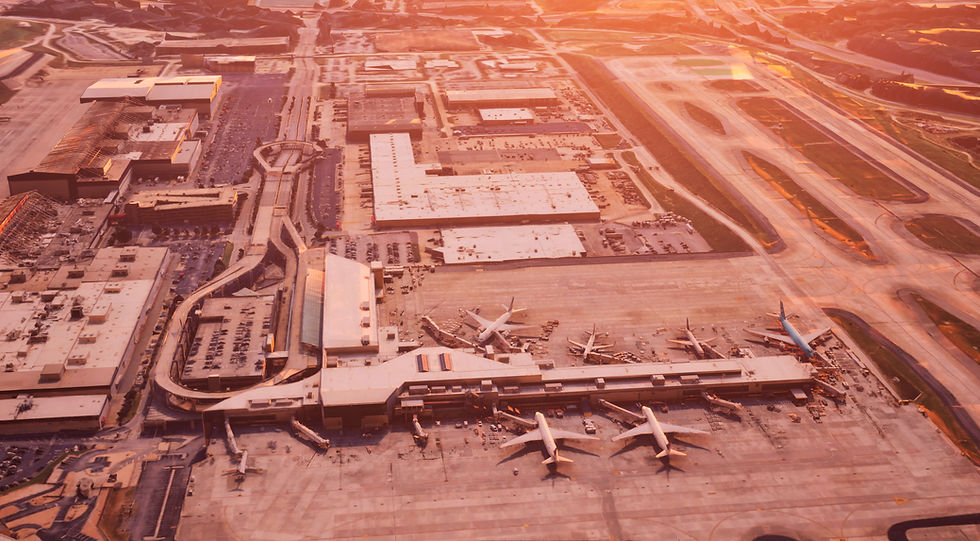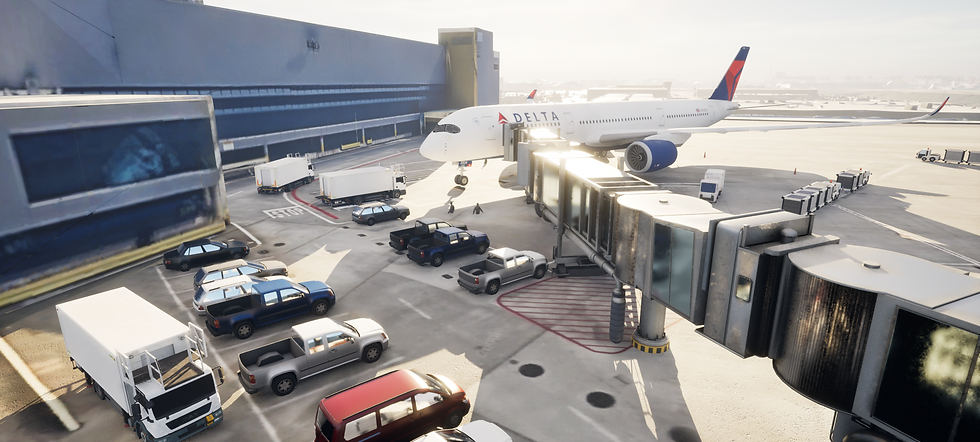The Ground Is Shifting Beneath Airports—And It’s Not Just the Runways
- Jasaun King
- Sep 2
- 3 min read

Airports are entering a new era—one where the competition isn’t just about passenger volume or gate availability. It’s about who can adapt the fastest to emerging technologies like LiDAR sensors and other A.I. based technology, who can improve operational efficiency at scale—and ultimately, who will be in the best position to lead the future of airport innovation. The pressure is rising, and those who move slowly risk falling behind in a world that’s increasingly being optimized by code and sensors.
But here’s the thing: many leaders know they need to innovate—they just don’t know where to begin.
A Rapidly Changing Landscape
According to the Airports AI Alliance, the speed of technological change is creating tension between innovation goals and operational reality. Airport executives are being challenged to adopt A.I.—while also managing legacy systems, training gaps, and shifting workforce dynamics. And they’re not wrong to be cautious. Rushing headlong into automation without a clear implementation plan risks both money and morale.
But waiting isn’t a strategy either. The U.S. AI Action Plan has already made one thing clear: artificial intelligence is no longer an emerging trend—it’s a national priority. It will influence how airports allocate funding, hire talent, and design next-gen infrastructure. The longer organizations take to pilot these tools, the more costly the catch-up will be.

Real Tools. Real Results.
Fortunately, some airports have already started charting the path forward—and they’re seeing results.
Tampa International Airport recently launched a LiDAR rollout to improve airside safety and operations. With real-time, high-resolution sensing, they’ve unlocked new levels of visibility on the tarmac—critical for both situational awareness and strategic planning.
Over in Europe, Frankfurt Airport is using real-time A.I. tracking to monitor ground handling operations. The result? Better resource allocation, fewer delays, and a more responsive ground network.
These aren’t prototypes or lab tests. They’re active deployments happening at scale—proving that A.I. and LiDAR aren’t just “the future.” They’re already reshaping airport operations right now.

Simulate Before You Deploy
Still, even with these successes, not every airport is ready to roll out new systems live. Testing new infrastructure, data flows, and automation logic in an operational environment can be risky—and expensive.
That’s where simulation becomes a force multiplier.
At Autonoma, we’ve developed a high-fidelity digital twin platform called AutoVerse, designed to help airports experiment, test, and refine new technologies in a Virtual Sandbox environment. From simulating airside LiDAR integration to modeling terminal-wide AI coordination, airports can explore what works—and what doesn’t—without interrupting a single gate assignment.
It’s a smarter, safer way to build toward innovation—on your own terms.

The Conversation Is Already Happening
From industry boards to tech councils, conversations around AI, automation, and aviation safety are intensifying. You’ll hear these topics on panels, at exhibitions, and behind closed doors—and while not every organization is ready to deploy just yet, every forward-thinking airport is preparing.
The question isn’t whether this will be a hot topic—it’s how ready your organization will be when it comes up.
Why wait when you experience what's next in Airport Innovation today?
Explore how simulation can help you cut through the noise, understand what’s possible, and walk into your next leadership conversation ready to lead it: AutoVerse



Comments